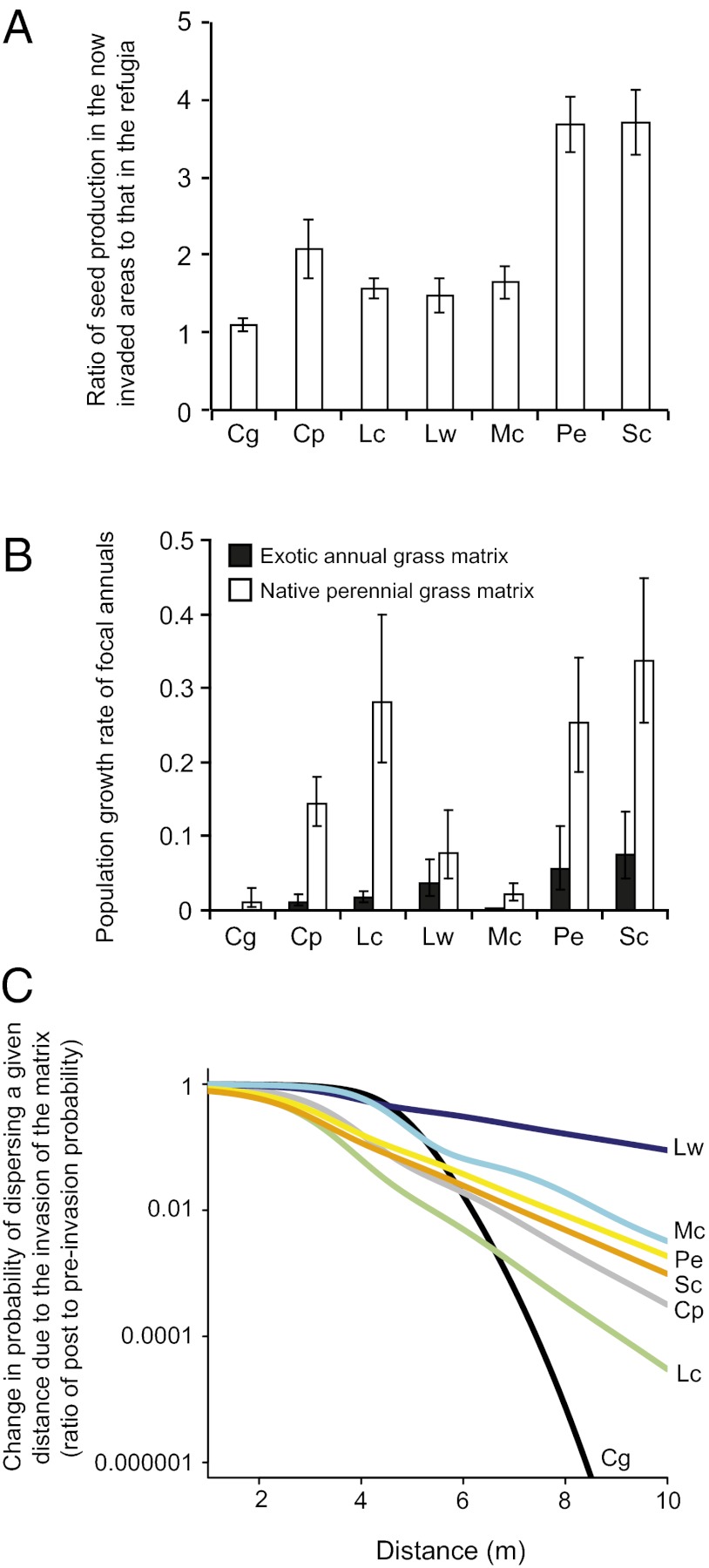Fig. 2.
Impact of invasion on local population sizes and dispersal. (A) When competing only against other native annual species, the focal annuals have significantly higher finite rates of increase in the area now occupied by invasive grasses than in their current refugia. Bars show mean ratio ± SE, with ratios greater than 1 indicating that areas now dominated by invasive species are optimal for the native plants. (B) Native annuals had higher finite rates of increase among native bunchgrasses than among invasive grasses (mean R ± SE) in the matrix habitat. Data are not presented as ratios because the finite rate of increase of Chaenactis among exotic grasses was zero. (C) Lower finite rates of increase of native annuals in invaded habitat greatly reduce connectivity by decreasing multigenerational dispersal through the matrix. Curves show the effect on the probability of dispersal of lowering species’ finite rates of increase in the matrix after invasion, given a mean dispersal distance of σ = 1. The effect of dispersal through the matrix is calculated assuming that offspring from a parent plant could not persist for more than 30 y in the matrix (i.e., nmax = 30 in Eq. S5). Cg, Chaenactis galibriuscula; Cp, Chorizanthe palmerii; Lc, Lasthenia californica; Lw, Lotus wrangelianus; Mc, Micropus californicus; Pe, Plantago erecta; Sc, Salvia columberiae.

